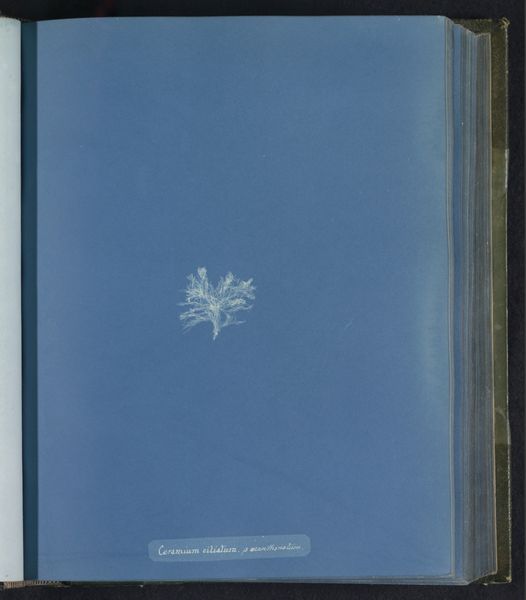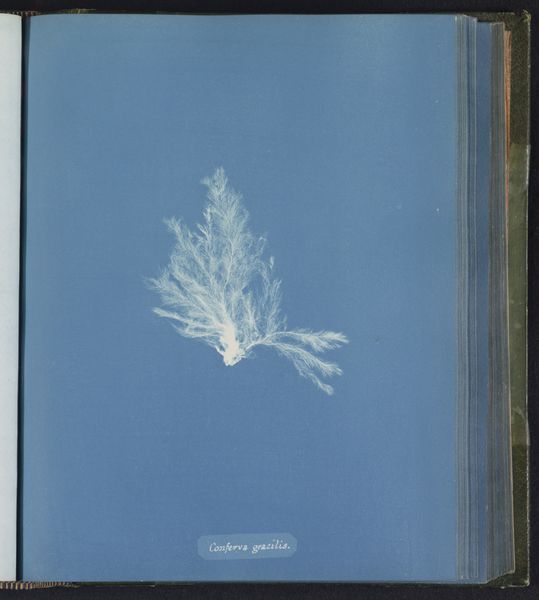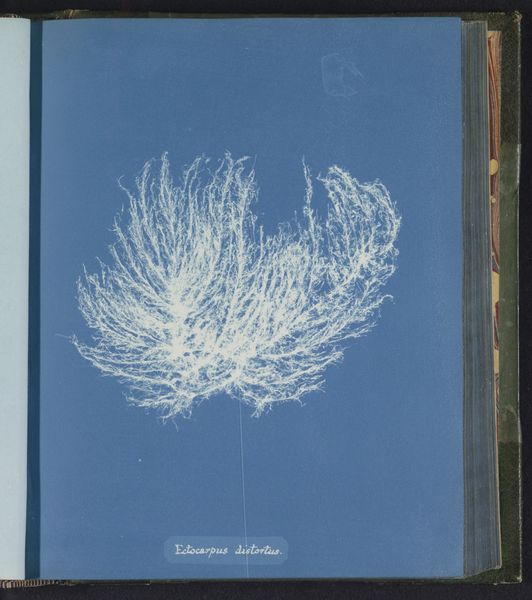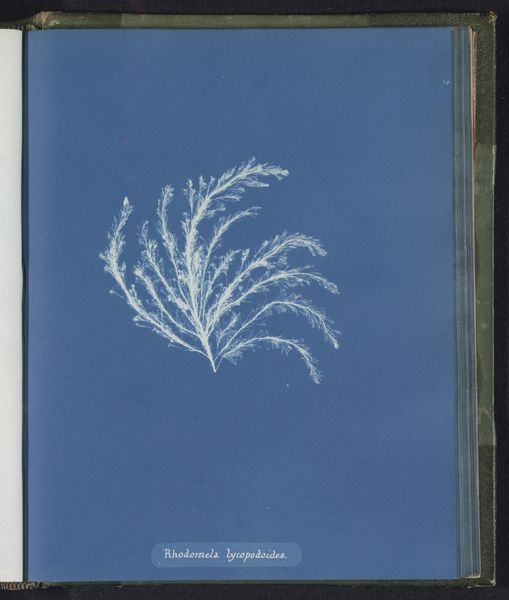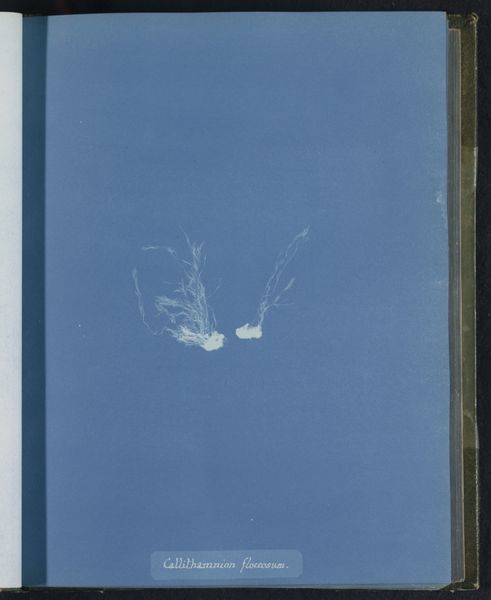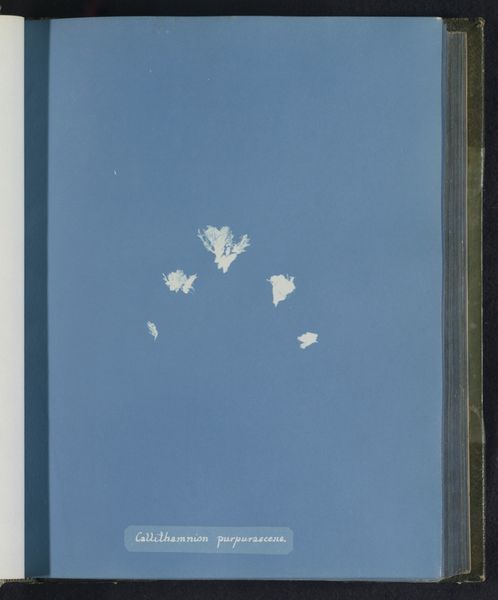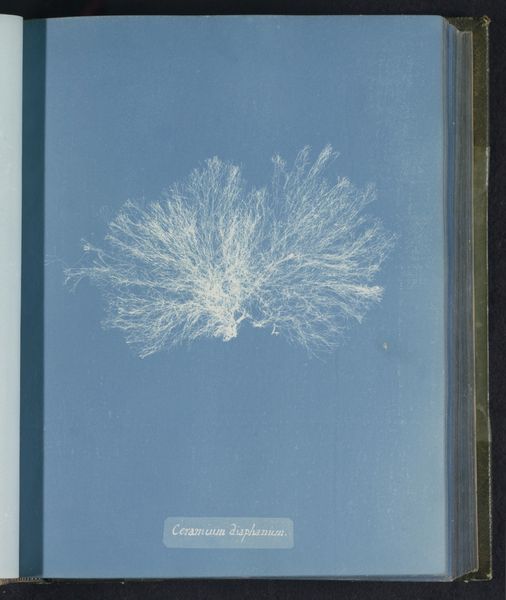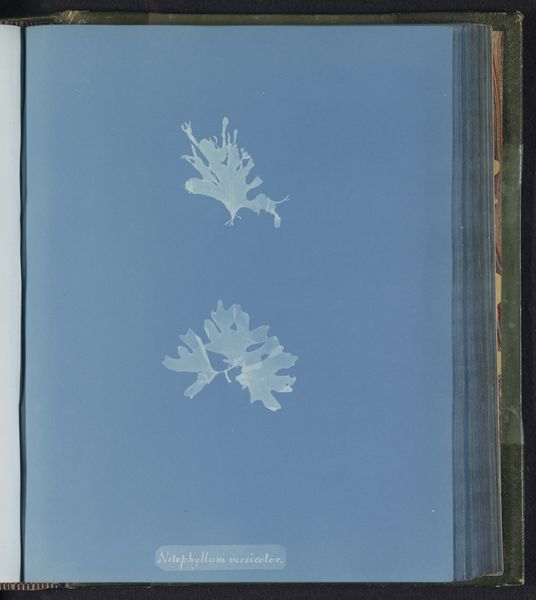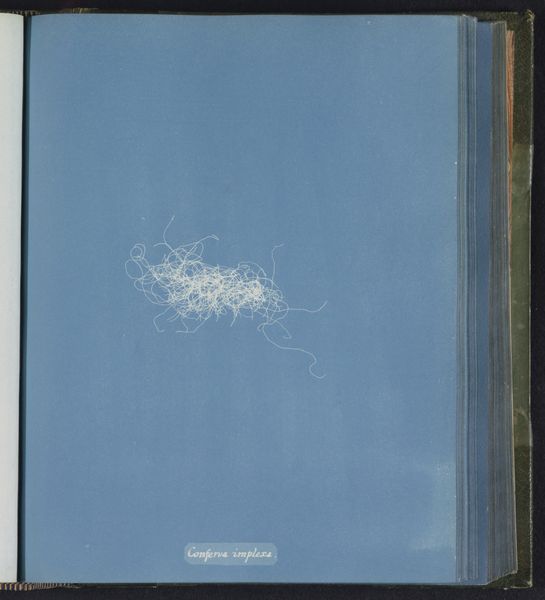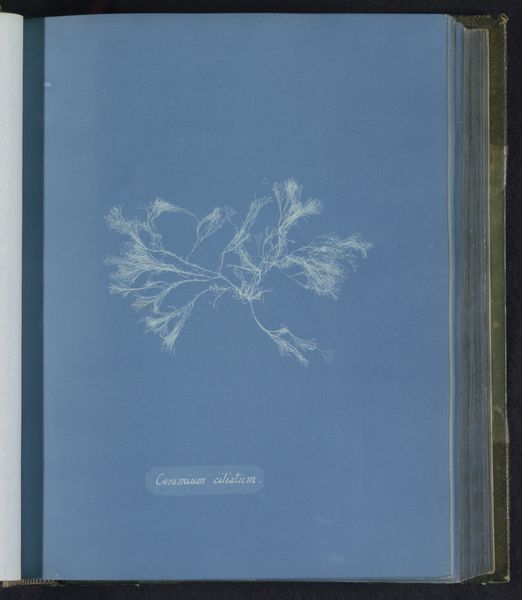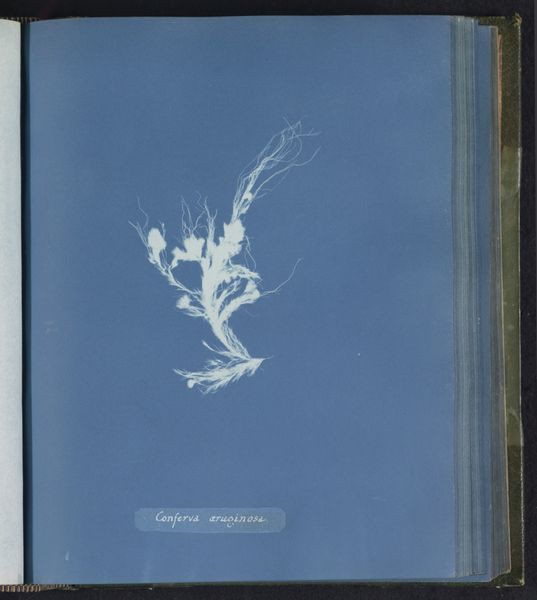
print, cyanotype, photography
# print
#
cyanotype
#
photography
#
realism
Dimensions: height 250 mm, width 200 mm
Copyright: Rijks Museum: Open Domain
Anna Atkins made this cyanotype of Polysiphonia stricta sometime in the mid-19th century, pioneering a technique that merged art and science. Her work embodies the Victorian era's fascination with cataloging and understanding the natural world. The cyanotype process, with its distinctive Prussian blue, creates a ghostly, detailed image of the seaweed. In 19th-century Britain, scientific illustration was crucial for disseminating knowledge. Institutions like the Royal Society played a key role in promoting scientific accuracy. Photography offered a new way to create accurate reproductions, and Atkins used it to publish "Photographs of British Algae: Cyanotype Impressions," considered the first book illustrated with photographic images. Atkins challenged the gender norms of her time by engaging in scientific pursuits, although the Royal Society did not admit women until 1945. By studying the publications and correspondence of scientific societies, we can examine the complex intersection of gender, science, and art in Victorian Britain. The meaning of Atkins' work lies in its historical context, reflecting broader social changes and the evolving role of women in science and art.
Comments
No comments
Be the first to comment and join the conversation on the ultimate creative platform.
